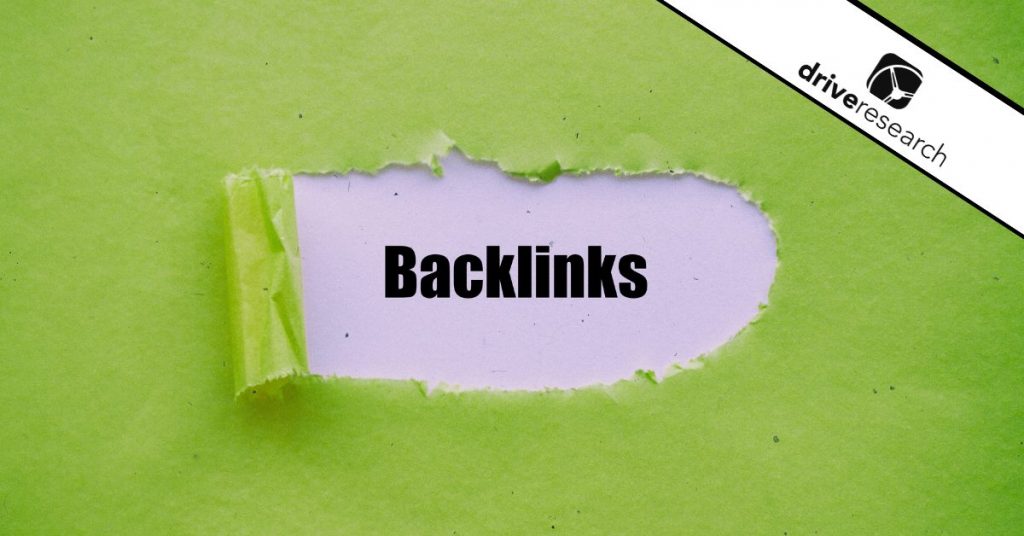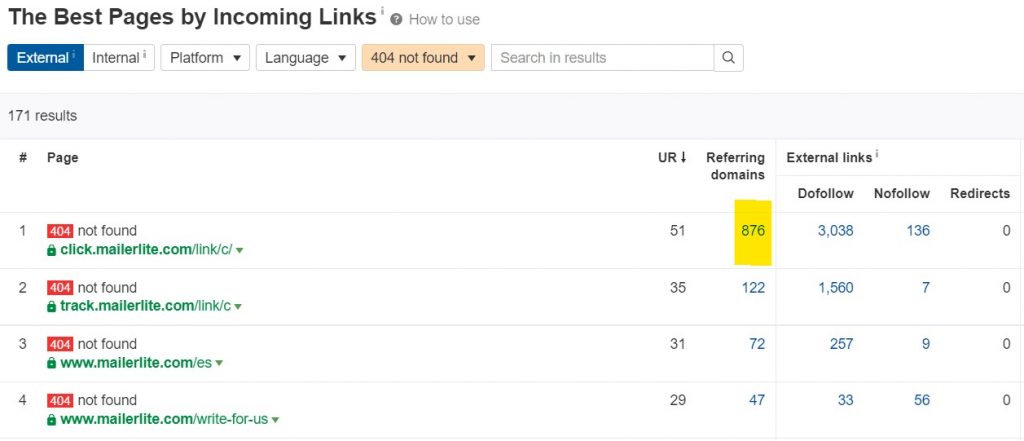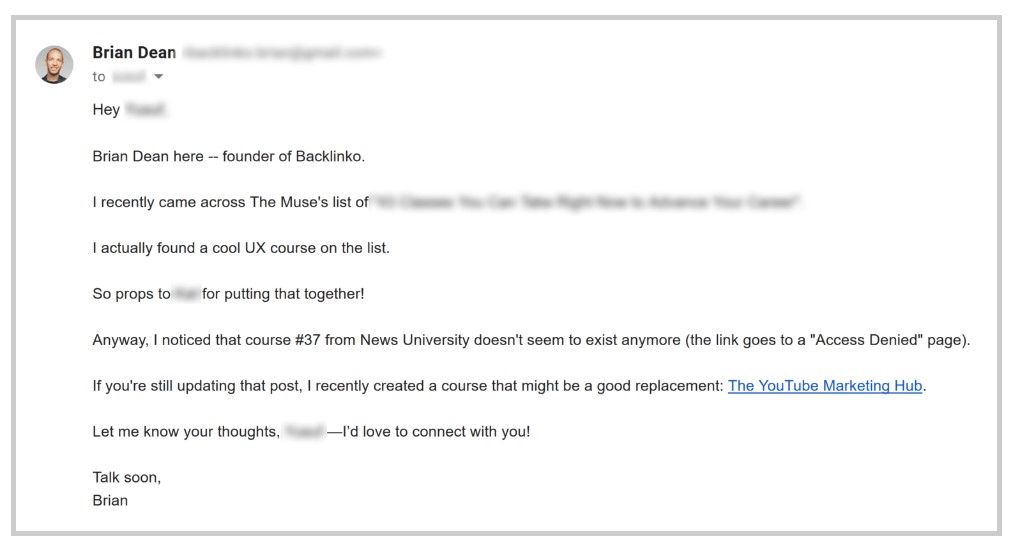
White hat link building is essential when it comes to improving your website’s search rankings and domain authority.
Quality backlinks to your website are a trust signal to search engines because they show that others value and recommend your content to their readers.
Yet, despite their importance, 94% of content on the internet never gets backlinked.
That’s because unless you’re ranked #1 on Google or have a high domain rating, they’re very hard to come by organically. It’s why some brands would rather buy backlinks through black hat SEO techniques, regardless of the major repercussions.
⚠️ Don’t fall into that same trap. ⚠️
What are Backlinks?
Backlinking occurs when one website links to a page on another website. Other common terms for SEO backlinks include inbound links, one-way links, and incoming links.
For example, here is a link from USA Today to our website, Drive Research.

Popular search engines like Google and Bing see backlinks as a “vote of confidence.”
In other words, if several websites are linking to the same page, then it must mean that the content of the page is valuable, trustworthy, and meets readers’ expectations.
These are all qualities search engines look for when determining what pages to rank higher than others.
It’s why pages with more backlinks often have higher organic search engine rankings.
In fact, websites that rank #1 on Google have 3.8x more backlinks than the rest of the top 10 sites.
White Hat vs. Black Hat Link Building
If you’ve ever tried to study search engine optimization, you know there are several different opinions on the best approach for ranking higher on Google.
While these articles are all subjective, there is one thing you must be aware of before you start using link building strategies: white hat vs. black hat backlinks.
For a quick overview, white hat backlinking is good and black hat backlinking is bad.
- White hat backlinks are links with high value and are the ethical way to optimize a site. While it follows search engine guidelines, it also takes a longer time to get more backlinks to your website.
- Black hat backlinks go against search engine guidelines and manipulate Google into thinking a page provides more valuable information than it does. People use this exploitative digital marketing approach because it can lead to getting more backlinks without much work.
Black hat backlink techniques include spamming blog comments with links to a website, writing low-quality guest posts, and purchasing low-quality backlinks.
The Downside of Black Hat Backlinks
Our content marketing research company strongly advises against black hat SEO.
Search engine algorithms are constantly improving, so although they may work now, it is unlikely these techniques will work in the future.
It will undoubtedly impact your bottom line if your website is blacklisted from search engines.
No traffic to your website = no conversions.
Plus, if your website experiences a penalty from Google, it can take months or even years to recover.
Examples of Link Building Strategies (Google Approved)
Luckily, there are several link building strategies that are effective in getting reputable sites to add hyperlinks pointing to your content.
To improve your search engine visibility, popular link building techniques include research-driven content marketing, email outreach, broken backlink building, press release distribution, and more.
Below we discuss all the ways to increase white hat backlinks to your website.
1. Use Statistics to Build Backlinks
When writing blog posts and news articles, many authors like to incorporate statistics to back up their content. Many understand that it can add validity to the point they are trying to make.
And they’re right. 74% of readers find content that contains data to be more trustworthy than content without data.
Therefore, conducting a content survey to generate relevant statistics for authors to source, can be a great digital PR strategy for getting more backlinks.
For example, each year our PR survey company conducts a survey on Black Friday shopping trends and predictions.
We write blog posts featuring the survey data and incorporating statistics like:
- 57% of consumers will shop online for Black Friday
- 35% of Americans plan to shop in person for Black Friday – a 119% increase from 2020
- The majority of consumers typically spend $400-$599 on holiday shopping
The Black Friday blog post has generated over 40 quality backlinks from sites such as CNBC (92 domain rating), The Drum (89 domain rating), and Moo Send (82 domain rating).
In addition to earning more backlinks, the survey data can also be used to grow brand awareness as a thought leader, develop lead-generating content, and increase visitors to your website.
Learn more about using exclusive research in our video below or read our Ultimate Guide to Custom PR Surveys.
2. Find Broken Links and Pitch Your Content
Broken links (also known as dead links) are web pages that can no longer be found. They often show as a 404 error page due to moving, deleting, or reorganizing content over time.
Either way, broken link building is an SEO technique that builds backlinks by replacing links to 404 pages.
Tools such as Ahrefs, Backlinko, and SEMRush can easily define where these broken link pages live and give you a clear path to promote your content instead.
Here is an example of how broken link building with Ahrefs can help your website outrank competitors.
- Navigate to Site Explorer
- Enter your competitor’s URL
- Click the Best by links report on the left-hand side
- Change the HTTP code to filter for “404 not found” pages
- Sort the report by Referring domains from highest to lowest
For example, MailerLite has 171 dead links and some have hundreds of referring domains.

Next, scan through these dead pages for topics that your brand has content on or that make sense for your brand to create content about.
For instance, they have a page about popup form builders, with 19 referring domains.
A competing email marketing company could reach out to those 19 referring domains alerting them that they are linking to a 404 error page and that they have content on that exact topic that they can link to instead.
Here is a broken link building outreach email that Backlinko used as an example.

3. Utilize Google Search Console
Google Search Console is a great tool for all things search engine optimization, including white hat backlink building.
One of their best features is the Top linking sites report. Here you will find a list of domains and pages that have a backlink to your website.
Sift through the list and see what type of blog posts, whitepapers, videos, or other types of content they’ve linked to.
This is a signal that they are familiar with your brand and have found value in what you’ve published.
A great next step is to email the marketing contact or author of the blog that is linked to your website.
Send them similar content they might find useful and see if they’d be interested in providing another backlink. This is a common practice, referred to as a link exchange.
Or perhaps they’d be interested in a guest post where you write free content for their website that includes more links back to your website.
But more on guest blogging as a white hate link building strategy later in this post!
4. Publish More Link Worthy Content
Creating long-form content is one of the oldest tricks in the link building strategy book. ?
In fact, long-form content gets an average of 77.2% more links than short articles.
Although writing quality, lengthy content is time-consuming, if you get it right, it’s worth a lot more than one or two backlinks.
We’re talking a number-one spot on Google, more website traffic, and higher conversion rates.
The goal is simple. Write a lengthy piece of content that other journalists, marketers, and industry experts can source and link to. Shoot for 5,000 words or more and include all in-depth aspects of a topic, not just the basics.
For instance, if you’re writing a post about coffee, subtopics should include types of coffee beans, types of coffee roasts, types of coffee drinks, types of coffee makers, coffee statistics, and so on.
Types of link-worthy content include:
- Ultimate guides
- How-to articles
- Exclusive research
- List posts
5. Create Infographics
It may surprise you that 53% of marketers use infographics as part of their white hat link building strategy.
Heck, it surprised me and I make infographics as part of my job at Drive Research.
Infographics are a type of data visualization that uses graphics, images, and charts to showcase statistics in a more visually appealing way.
They are great for giving a brief overview of a topic. Infographics also break down more complex concepts in a format that is easier to understand and digest.
Take for example, Outgrow. Their infographic on Top Social Media Trends to Focus On has 80 backlinks so far.

6. Join Connectively (Formerly HARO)
Connectively, formerly, Help a Reporter Out (HARO) is one of the best resources for gaining white hat backlinks from news websites and journalist blogs.
For instance, Fox News, Chicago Tribune, and The New York Times are all media outlets that seek expertise from sources via Connectively.
Better yet, these websites typically have higher domain ratings and site rankings being that they bring in a lot of readerships.
After signing up for Connectively, you can submit queries to find expert sources, explore and search a feed of queries from journalists, send pitches and track them within the app, and so much more.
If your submission is selected, you will be given a backlink from that media outlet.
7. Subscribe to Terkel
In addition to HARO, I recommend signing up for Terkel as part of your strategy to build more white hat backlinks.
Similar to HARO, brands and media outlets use Terkel to get opinions, feedback, and thought leadership responses to their queries.
They compile their favorite responses and create a blog post or article with that content. The benefit to selected contributors is that they earn a backlink.
For example, I recently responded to a query that American Express posted on Terkel. My response was selected, earning DriveResearch.com a backlink from a high-domain website.
8. Write Testimonials for Brands You Love
Oftentimes businesses are more concerned with receiving testimonials than they are writing them.
That’s because they offer social proof to potential customers. Brands often display them on their homepage, client page, service pages, pricing pages, and other areas of their websites.
What often goes overlooked is that those testimonials can include a link to the client’s website.
Therefore, writing a recommendation for a product or service you love can get you a backlink to your site.
To make this SEO strategy worth your time, look for brands that have high domain authority. Search engines consider backlinks from high authority sites to be more reputable than ones with low ratings.
9. Write Guest Posts
If you’re a content machine, then writing articles or blogs for sites that allow guest posts is the perfect white hat link building strategy for you.
For instance, guest blogging websites often let their contributors link to your site within the content of the blog or the author bio.
Monster Insights has a great hack for finding websites that are accepting guest posts. They recommend running a Google search with a relevant topic keyword and adding write for us to the search query.
- Social media marketing + write for us
- Financial tips + write for us
- eCommerce + write for us
Google will then show you a list of websites that accept guest posts related to your industry. Either apply to be a guest contributor or submit your written post.
We recommend always reading and following their writer guidelines for your best chance of the post getting approved and published.
10. Be a Guest on Podcasts
Lastly, podcast features are an excellent addition to your white hat link building strategy to grow in search rankings.
It seems like everyone and every brand has a podcast these days so finding relevant shows shouldn’t be too hard.
Think beyond joining podcasts particular to your industry. There may be podcasts focusing on your job role, demographics, life events, and so on.
For instance, our Owner and President, George Kuhn joined the ‘Into the Corner Office Podcast’ to discuss his unexpected career path to owning his own market research company.
When accepting a guest spot on a podcast, ask for a free backlink in the podcast notes in exchange for your time and commentary.
Final Thoughts
Creating effective links is critical to the growth of your website. In fact, 53% of SEO experts believe that backlinking will one day be just as important as search.
Though, not all backlinks are created equal. To see the most success from your efforts, focus on white hat link building strategies such as research-driven content, press release distribution, dead link building, and contributing to HARO.
By focusing on growing quality backlinks, your website will earn higher search rankings, more website visits, and increased conversions.
What do you have to lose?
Get More White Hat Backlinks with Drive Research
Drive Research is a content marketing research company that can help your team conduct many of these strategies on this list. For instance, we often work with clients on PR surveys and infographics to build their content marketing strategy.
Our research has been featured in notable publications such as USA Today, The Boston Globe, and CNBC. Gaining backlinks from these websites have helped improve our domain rating and search rankings on Google. And yours can too!
Contact our team today to learn more about our PR surveys for clean link building services.



